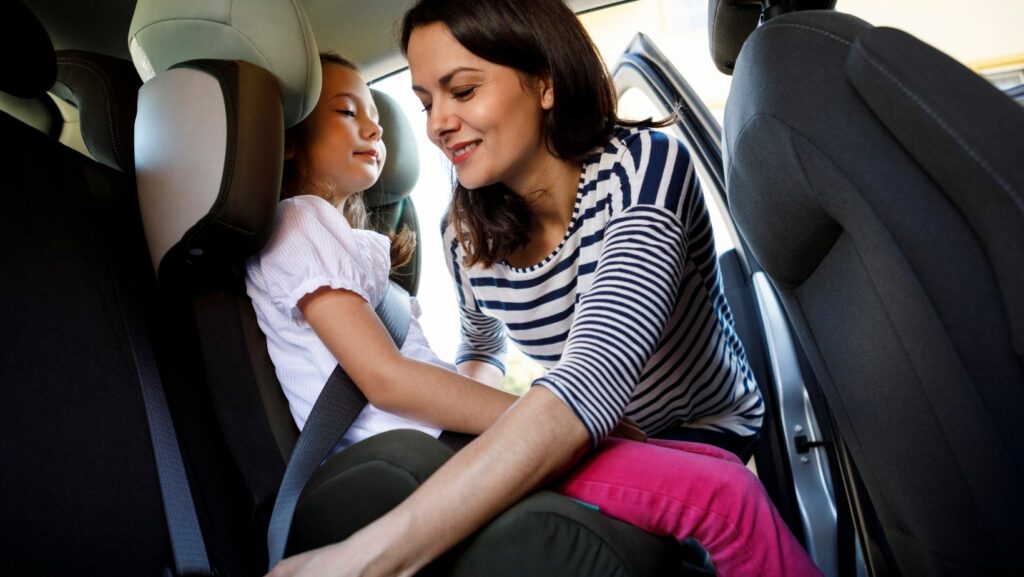Choosing the right car seat for a child can often be a daunting task. With countless models on the market, each boasting unique features and safety measures, it’s critical to make an informed decision based on your specific needs. After all, the car seat isn’t just another accessory; it’s an essential tool to ensure your child’s safety while on the road.
It’s worth noting that not all car seats are created equal. Some are designed for newborns and very young children, while others cater to older kids who’ve outgrown their initial seats but aren’t yet ready for standard seat belts. Understanding these differences is key in selecting a car seat that suits your child’s age, weight, and height.
Moreover, deciphering between high-end models with advanced safety features and basic ones can also be challenging. Safety should always come first when choosing a car seat but it doesn’t mean you have to break the bank for it. There are plenty of affordable options available that meet or even surpass regulatory standards.

Importance of Using a Car Seat
One cannot overstate the significance of car seats in ensuring child safety during travel. They’re not just an extra accessory but a vital requirement that can drastically cut down on risks associated with road mishaps.
Firstly, let’s delve into some statistics to highlight their importance. According to data from the Centers for Disease Control and Prevention (CDC), car seat usage reduces the risk of injury in crashes by 71-82% for children, when compared to seat belt usage alone. Furthermore, for infants under 1 year old, car seats have been found to reduce the risk of fatal injury by 71%.
| Age Group | Risk Reduction |
| Under 1 Year | 71% |
| Children | 71-82% |
Next up is the aspect of law compliance. It’s crucial to note that all 50 states in the U.S require car seats or booster seats for children up until they reach certain height or age benchmarks. Failing to comply could result in hefty fines and penalties.
Here are some key pointers:
- Rear-facing car seat: Children under two must be placed in these types of seats.
- Forward-facing car seat: Typically used once kids outgrow the rear-facing ones.
- Booster seat: This is used when children outgrow forward-facing seats.
Lastly, it’s worth mentioning that using a properly fitted and installed car seat ensures your little one stays comfortable throughout your journey. The right fit can prevent unnecessary discomfort caused by uneven seating positions or improperly adjusted harnesses.
To sum things up:
- Car seats significantly reduce injury risks.
- They ensure you abide by state laws.
- Properly installed ones provide comfort during travel.
Remember, every time you hit the road with your child onboard without them being securely tucked into a proper fitting car seat, you’re gambling with their safety — a bet no parent should ever make!

Types of Car Seats
When it’s time to hit the road with your little one, a car seat becomes more than just an accessory—it’s a necessity. There are several types of car seats you’ll come across in your search, each designed for different stages of your child’s growth and development.
Infant Car Seats
Infant car seats are designed specifically for newborns and small babies. They’re rear-facing seats that can typically accommodate children from birth up until they reach about 35 pounds or so.
One key feature of infant car seats is their portability. Often, they’re part of a travel system and come with a base that stays installed in the car. The seat itself can be easily detached and carried around—quite handy when you’ve got a sleeping baby who you don’t want to disturb!
Safety is paramount when it comes to infant car seats. Look for models that have been rigorously crash tested and offer side-impact protection. Additionally, five-point harnesses provide optimal safety by securing at both shoulders, hips, and between the legs.
Convertible Car Seats
Convertible car seats are like the Swiss Army knife in the world of child transportation—they adapt as your little one grows! These versatile units can function as both rear-facing for infants and forward-facing for toddlers.
While convertible car seats lack the grab-and-go convenience of their infant counterparts, they score big on longevity since they cater to a larger weight range—upwards from 5 pounds to 65 or even 70 pounds depending on the model.
Just like with infant models, safety features such as five-point harnesses, side-impact protection systems, steel-reinforced frames should top your must-have list when shopping around.
Booster Seats
Once kids outgrow their forward-facing seats (usually around age four), it’s time for them to transition into booster seats. Booster seats elevate children so that standard vehicle seat belts fit properly over their body.
There are two main types of booster seats: high-back boosters and backless boosters. The former provides head and neck support, especially for children who still fall asleep in the car, while the latter is a good fit for older kids who’ve outgrown high-back models but aren’t quite big enough to use only a seat belt.
Keep in mind that most states have laws regarding when children can transition from car seats to booster seats, so be sure to check your local regulations. Safety should always be the priority—ensure that your chosen model meets or exceeds Federal Motor Vehicle Safety Standards.

Leave a Reply